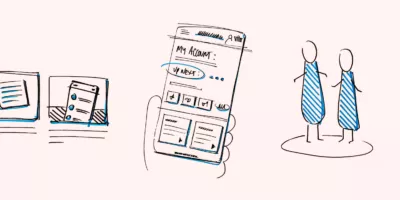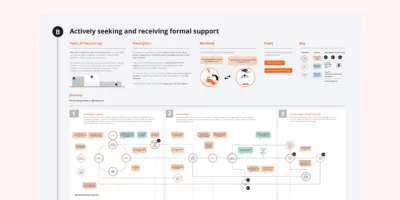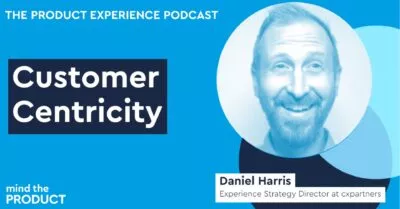20 Sep 2022
Five principles for keeping the focus on the customer
Research tells us that organisations with high customer centricity maturity have faster revenue growth, increased employee satisfaction and can implement change quicker than companies with low customer centricity maturity. One crucial element to achieving a high customer centricity maturity is keeping the customer front and centre of everyone’s minds at all times. But how can organisations maintain that relentless focus on the customer that’s so critical to the company’s success? Here are five principles to put into practice:
-
Anna Boscoe
User Experience Content Specialist
Anna Boscoe
1. Increase exposure hours
First and foremost, increase the number of hours each team member is exposed to real users interacting with your product or designs. Author and UX consultant Jared Spool determined that a bare minimum of 2 hours of exposure to users every 6 weeks is needed to see significant improvements in products. Any less frequent than that and the users and their needs are unlikely to be front and centre of the teams’ minds. This should not be limited to the design team. Get your developers, project managers, stakeholders, clients – everyone – watching user research as it takes place. This could be in another room in the same building watching on a screen, which is great for facilitating discussions. Or if people really can’t be there in person, enable them to log in remotely to watch live, or record the sessions to watch back later. There’s nothing quite like seeing a customer struggling with your product or hearing about their lived experiences. It’s something that will stick in everyone’s minds far more than being told what happened or seeing quantitative data.
Here’s what Stephen Allen, UX and Design Manager from RAC said about the value they gained from carrying out user research:
The business makes lots of statements saying ‘we put the customer front of mind when making decisions’, but that’d got lost. People delivering the product lose customer focus. cxpartners showed them that listening to the user has a positive outcome. Put the customer first and the rest will follow.
2. Embrace co-design
Don’t just design for your customers. Design with them. Involve your users in the design process itself by carrying out sessions where customers and the design team help to co-create new solutions as equal partners. These are the people who will be most impacted by design decisions. Who better to ensure the designs meet their needs and are usable than your users themselves? Start early on in the design process and continue throughout. Co-design brings you so much closer to your users, helping to uncover their true needs and wants, and in turn lowering the risk and cost of projects.
3. Create meaningful personas
Creating assets that represent customers is a great way of keeping your customers in mind throughout the design process. Personas that reflect your customers’ relevant needs, motivations, desired end-states and behavioural characteristics in different circumstances can be really powerful. Highlighting emotional experiences too really brings them to life and makes them more relatable. For example, what frustrates them, what makes them happy etc. Personas should be based on real user research and avoid using demographics (e.g. age, gender, ethnicity, income etc) – these are not inclusive and play into stereotypes. Avoid using photographs too, as these can be misleading. To ensure personas don’t get forgotten about, ideally keep them visible. However, this is hard in a remote environment. Another way is to integrate them with existing tools, processes and ceremonies – piggybacking onto things that are already in place and referred to on a regular basis.
4. Share soundbites and stories from user research regularly
Frequently share things you’ve seen and heard in user research sessions – play clips from research, share quotes, and tell real stories that you’ve heard to bring your customers to life and build empathy. Don’t just save them for presentations and final reports, try getting into the habit of referring to them regularly throughout projects.
5. Create user stories based on real user needs
Rather than writing a list of features to be built, or just going straight into wireframing following research, write user stories that reflect real user needs. A user story describes the type of user, their need, and why. This is a robust way of anchoring everything, and everyone, in the actual needs of people who will use the product or service. They stimulate important conversations, provide a way to prioritise features and allow you to look at problems in a different way and solve them creatively. User stories are also more likely to stay visible and be referred to throughout the project, maintaining that relentless focus on the customer that is so important.
If you’d like to find out your customer centricity rating and learn what you can do to become a more customer centric organisation, take a look at our customer centricity model. You can also sign up to attend Customer Centricity Month 2022, a series of webinars diving into the details of the five dimensions which make up our model.






















































